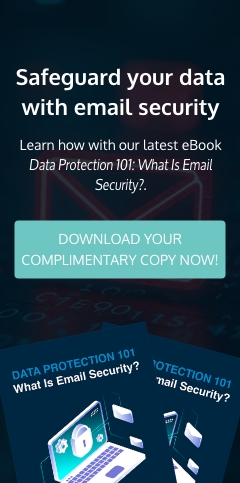Today, mobile devices have become indispensable tools for business success. Smartphones and tablets help leaders easily connect with their teams, manage tasks, reach a wider audience, process payments, and more. But this increased connectivity also brings heightened risk, especially for small- and medium-sized businesses (SMBs).
High-profile cyberattacks may grab headlines, but smaller businesses are often more frequently targeted due to their perceived vulnerabilities. For these organizations, a data breach can lead to lost customer trust, financial repercussions, legal trouble, or even permanent business closure. Fortunately, SMB owners like you can take certain steps to keep business mobile devices secure and ultimately safeguard your data.
Understanding mobile device security risks
Before we explore solutions, it's crucial to understand first the risks that mobile devices pose, including:
- Data breaches: Sensitive information can be accessed through lost, stolen, or compromised devices.
- Malware and viruses: Mobile malware can steal information or spy on users.
- Unsecured Wi-Fi networks: Devices connected to public Wi-Fi networks are at risk of interception and data theft.
- Phishing attacks: Phishers are increasingly targeting users through mobile devices, aiming to trick users into revealing sensitive information.
How can SMBs improve their mobile device security?
When implemented together, the following strategies create a multilayered defense system that reduces the risk of mobile device security breaches for SMBs.
Enforce a mobile device policy
The foundation of mobile device security begins with establishing clear policies and procedures. Your mobile device policy should clearly outline the following:
- The acceptable use of mobile devices in the workplace
- Necessary security measures, such as password requirements and encryption solutions
- Protocols for lost or stolen devices
- Guidelines for downloading apps and accessing business data
This not only ensures that employees understand their responsibilities but also minimizes potential vulnerabilities and establishes a clear course of action in case of incidents.
Enforce strong authentication methods
Fortifying your accounts with strong passwords is crucial to keeping intruders at bay. Require your team to use passwords that are difficult to crack through brute force attacks. Additionally, implement an extra layer of verification, such as biometric authentication or a one-time password, to prevent account takeover even when a password is compromised.
Regularly update devices and apps
Software updates often fix recently found weaknesses in a program's defenses, so set your business devices to update automatically whenever possible. If automatic updates aren't available, establish a regular schedule for manual updates to ensure all devices are secured.
Utilize mobile device management (MDM) tools
MDM solutions allow you to remotely secure and manage mobile devices across your organization. They let you wipe data from lost or stolen devices, enforce security policies, and segregate business data from personal data on the same device.
Educate your team on security best practices
Human error can undo even the most robust security measures, so it’s essential to educate your team about the risks of and best practices for using mobile devices. Regularly hold cybersecurity awareness training programs to equip employees with the necessary skills to protect against cyberattacks, such as how to recognize phishing attempts. Emphasize the importance of avoiding unknown senders and never downloading attachments or clicking on links from untrusted sources.
Employ end-to-end encryption
By scrambling information, encryption makes data indecipherable to anyone who doesn’t have the decryption key. Mobile devices typically have built-in encryption features; ensure these are enabled to prevent unauthorized parties from reading your data, even if they manage to intercept it.
Secure Wi-Fi connections
Public Wi-Fi networks are typically unsecured and vulnerable to malware and other cyberthreats. Therefore, you should advise employees to avoid using public Wi-Fi for any tasks involving sensitive business information. If remote work is necessary, provide them with a virtual private network to encrypt both incoming and outgoing data on mobile devices.
Install security software
Just as with PCs, mobile devices benefit from security software that can protect against malware and other cyberthreats. Choose a reputable security app and make sure that it's installed on all business-related mobile devices.
By following the strategies outlined above, SMB owners can protect their organizations from digital threats and foster a secure mobile environment. However, note that mobile device security is a continuous process. You should stay informed about the latest security threats and trends, adjust your policies as necessary, and maintain an ongoing dialogue about security with your team.
For personalized guidance and expert implementation of a robust and comprehensive cybersecurity defense, turn to NetQuest. With over 29 years of experience safeguarding the data of SMBs, we are one of Maryland’s most trusted technology partners. Contact NetQuest today.


